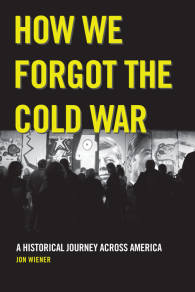Reading is absolutely my favorite activity. I like it more than shopping in fact (though obviously shopping FOR books or book-related items [including clothes] is the ideal blend...)! So it's always wonderful when I get to write about reading. I really enjoyed working on this piece for PAW (Princeton Alumni Weekly-- I always love seeing things in print and not just online, so here it is on Page 60) and interviewing the author, Jon Wiener, who is an academic who crosses the boundaries to spread the message about history to the general public. He hosts a weekly radio talk show in the LA area and he is also a contributing editor at The Nation. While I'm not quite as prolific a writer as he is (yet, hopefully), I have been proving to myself that I am a prolific reader; according to my list I've read nine books in the first five weeks of the year so far...
In 1997 Jon Wiener ’66 visited the Nevada Test Site, where the U. S. government tested nuclear weapons from 1951 to 1992. The site recently had opened as a tourist destination; the government hoped to highlight its significance in the Cold War. But Wiener saw that some tourists were more interested in the site’s role in UFO lore than they were in learning about nuclear deterrence.
Over the next decade, Wiener, a professor of 20th-century history at the University of California, Irvine, visited nearly two dozen Cold War memorial sites, including the Titan Missile Museum in Green Valley, Ariz.; the Greenbrier bunker in West Virginia, where political leaders would decamp during a nuclear attack; and the Whittaker Chambers Farm National Historic Landmark near Baltimore, where in 1947 Chambers pulled some 35mm film from a hollowed-out pumpkin, saying it proved that the State Department’s Alger Hiss was a Soviet spy. The result of Wiener’s travels is How We Forgot the Cold War: A Historical Journey Across America (University of California Press).
The Cold War is part of “a past that people seem to have trouble remembering — or don’t want to remember,” writes Wiener, who perhaps is best known for his battle to obtain FBI files on Beatle John Lennon. In 1991, shortly after the USSR collapsed, Congress allocated $10 million to preserve artifacts of the Cold War for public display, portraying the era as a victory of good over evil. But little of that money was spent, and existing Cold War sites have few visitors.
